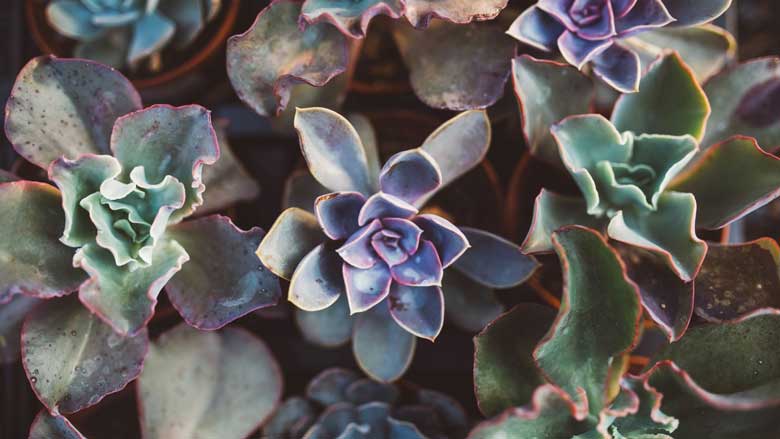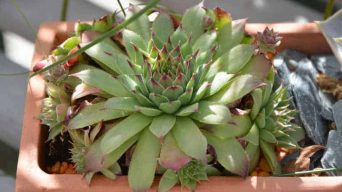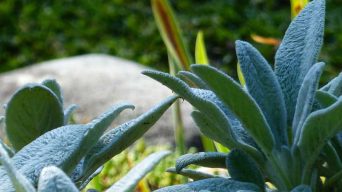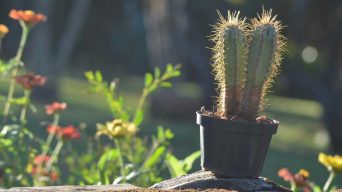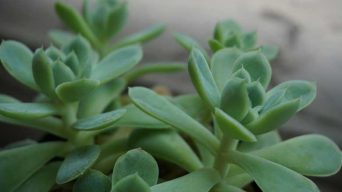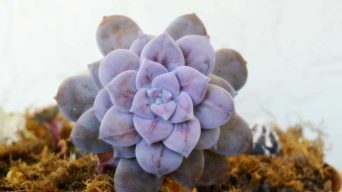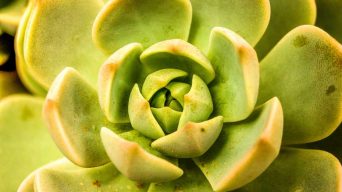Succulents may die from overwatering, underwatering, sunburn, light deprivation, poor drainage, unsuitable soil, root-bound conditions, cold exposure, heat stress, fertilizer imbalance, pests, or diseases. To revive a dying succulent, assess its specific issue and take corrective actions, such as adjusting watering frequency, ensuring proper sunlight, improving drainage, repotting, protecting from extreme temperatures, and addressing pests or diseases promptly. With care and attention, most succulent issues can be resolved for a healthy, thriving plant.
Succulent plants are known for being drought-tolerant and easy to care for, but even they can succumb to death if not given the right conditions.
If you’ve been having trouble keeping your succulents alive, you’re not alone. Many people have this problem. But don’t worry, there are solutions.
Succulents are a popular houseplant choice because they’re low maintenance and drought tolerant – but even they can die if not given the proper care.
But why are your succulents dying, and what can you do about it?
Here are some of the most common reasons succulents might die, along with effective ways to remedy each situation.
1. Excessive Watering: A Common Culprit of Dying Succulents
Overwatering is the primary cause of death for succulents.
When you give your succulent too much water, it will start to rot.
The roots can’t absorb that much moisture and don’t have enough oxygen, which causes plants to turn brown or black and eventually die off completely.
An overwatered succulent will also have soft, mushy leaves and will be generally wilted. It will often have a foul odor as well.
Addressing Overwatering
The easiest way to avoid overwatering is to water your succulents only when the soil feels dry. Stick your finger in the potting mix up to an inch deep – if it’s wet, don’t water it.
You can also use a moisture meter to help you gauge when your plant needs watering.
Succulents must be watered thoroughly, but don’t water them too often.
When watering your succulent, check the soil for moisture before adding water; if it is still damp, wait until it is dry before watering again. When you do water, water thoroughly and allow the excess water to drain out of the drainage hole at the bottom of the pot.
In the summertime, you might need to water your succulents every other day, while in the winter, it could go up to a week or two without needing water.
2. Underwatering: Finding the Right Balance for Succulent Well-being
Underwatering is another common reason why succulents die.
If you don’t water your plant enough, it will become dehydrated, and the leaves will start to shrivel up or fall off entirely as they try to conserve moisture by shedding their outer layers.
Succulent roots that receive insufficient water may also become brown and brittle when deprived of moisture for an extended period.
Resolving Underwatering Issues
The best way to know when your succulent needs water is by sticking a finger in the soil and checking if it feels moist or dry.
If it’s wet, you don’t need to add more water until next time; if not, give your plant some as soon as possible.
If you’re unsure how often to water your succulents, a good rule of thumb is once every week or two during the growing season (spring and summer) and no more than once a month in winter.
The frequency will vary depending on what kind of plant it is and where you live, but this should give an idea.
3. Sunburn and Its Impact on Succulents
Succulents are native to arid regions that get lots of sunlight, so why would they die from too much sun?
The challenge with sunburn in succulents lies in the fact that their leaves have a limited tolerance, and they can either burn out or completely desiccate if exposed to too much sunlight.
A sunburned succulent will have brown spots and crispy leaves and will generally be wilted.
Remedies for Sunburn
To prevent your succulent from receiving excessive sunlight, position it in an area with partial sun or shade.
Houseplants thrive in partial sun or shade. To create an ideal environment for their growth, consider placing them near a window with a sheer curtain to diffuse the light.
4. Light Deprivation: Impact on Succulent Growth
Succulents need plenty of bright, indirect light to thrive. If they don’t get enough light, they’ll stretch out searching for the sun and eventually die.
Succulents need at least four hours of sunlight daily, preferably in the morning or afternoon.
Enhancing Sunlight Exposure
If your succulent isn’t getting enough light, you can move it to a spot where it will get more sun.
This could mean putting indoor succulents near a window that gets some light during the day. An east- or west-facing window is best.
For outdoor succulents, try moving them to an area of your yard that gets more sun, but be careful not to put them in direct sunlight as this can burn the leaves.
Like Aloes and Agaves, some succulents need more light than others, so research before buying one!
5. Drainage Troubles: A Key Factor in Succulent Survival
When growing succulents, choosing a container with good drainage is important, as poor drainage can lead to root rot and, ultimately, the death of the plant.
Therefore, it is essential to select a container with drainage holes and a layer of gravel at the bottom to ensure the succulent has the best chance of survival.
If you put your succulent in a pot without drainage holes or with a thick layer of mulch on top, the water will pool at the bottom and cause root rot – which means death for your plant!
Examine the roots to identify the cause if you’re uncertain why your succulent is dying. Black or mushy roots indicate the presence of root rot.
Improving Drainage for Optimal Health
To prevent poor drainage, make sure your succulent pot has drainage holes.
If the pot doesn’t have drainage holes, you can create them with a drill or by poking small holes in the bottom of the pot.
Another way to improve drainage is to add pebbles or gravel to the bottom of your pot before adding soil. This will help prevent the soil from sitting in water and causing root rot.
Once the pots have been filled with the appropriate amount of drainage material, they should be filled with soil, ensuring that the soil is not packed too tightly and that the pots have enough space for adequate drainage.
By following this approach, the plant roots will avoid waterlogging, preventing the occurrence of root rot.
6. Soil Matters: Choosing the Right Medium for Succulents
One of the most common reasons succulents die is that they’re not planted in suitable soil.
Succulents need fast-draining soil that is light and airy. A soil mix like cactus potting mix or succulent soil is perfect for succulent plants.
These types of soil will drain well but still retain some moisture.
Correcting Soil-related Problems
Check the soil if you’re not sure why your succulent is dying.
If it’s dark and wet or smells like rotten eggs, there’s a good chance the problem is with the soil.
You can quickly fix this by repotting the plant with fast-draining soil like cactus potting mix or succulent soil.
If you want to make your own soil, try mixing two-part potting soil, one part coarse sand and one part perlite.
7. Root-bound Succulents and Their Health
If your succulent is in a small pot and the roots have started to grow out of the drainage holes, it’s a sign that your plant is root-bound.
When a plant becomes root-bound, its growth will slow down and eventually stop.
This happens because the roots are taking up too much space in the pot, which prevents them from getting enough oxygen and water to survive.
When planting multiple plants in a single pot, it is important to use separate containers for each plant to prevent overcrowding, which can deprive the plants of the oxygen and water they need to survive.
Managing Root-bound Growth
If your succulent is root-bound, you can fix it by transferring it into a bigger pot with more space for the roots to grow.
You can also prune some excess roots with a sharp knife or scissors. Just be careful not to cut any of the healthy roots.
8. Battling Cold Weather: Protecting Succulents from Chill
Succulents don’t like cold weather and can die if exposed to temperatures below 50 degrees Fahrenheit.
They’ll also suffer damage if they’re exposed to frost.
If your succulent is exposed to cold weather, it will wilt and turn mushy before eventually dying off altogether.
Treating Cold Damage
The best way to protect your succulents from the cold is by bringing them indoors during the winter months or moving them into a greenhouse.
By creating a climate-controlled environment, such as a greenhouse, or bringing succulents indoors during the winter months, you can protect them from the cold and ensure they receive the proper amount of sunlight, humidity, and temperature needed to thrive.
If you don’t have a greenhouse, you can create a makeshift one by covering your succulent with a plastic bag or glass jar.
Just make sure to leave some openings for air circulation.
You can also try bringing them inside during cold weather spells, but be aware that they may not recover if they’re exposed to the cold for too long.
9. Heat Stress: Managing High Temperatures for Succulent Well-being
Succulents don’t like hot weather and can die if exposed to temperatures above 95 degrees Fahrenheit.
Exposure to hot weather can cause your succulent to wilt, turn brown, and eventually die.
Alleviating Heat Stress
The best way to protect your succulents from the heat is by moving them into a shadier spot.
If that’s impossible, try covering the soil with mulch or gravel to keep it cool.
Another option is to mist your succulent in the morning and evening to help it stay hydrated during hot weather spells.
10. Fertilizer Balance: Nourishing Succulents without Overuse
Succulents are sensitive to fertilizers and can be easily killed by overfertilizing.
If you’re fertilizing your plant too often or too much, you can overfertilize it and kill it.
Overfertilizing can cause the succulent leaves to turn yellow or brown and the roots to rot.
Maintaining the Right Fertilization Levels
Succulents must only be fertilized during the growing season, usually from spring through fall.
You shouldn’t fertilize them during the winter months.
They must be fertilized with a diluted fertilizer at half strength every two weeks during the growing season.
Only apply fertilizer to the soil, not the plant leaves, as this can burn and cause them to die.
11. Pests and Diseases: Common Causes of a Dying Succulent
Another reason your succulent might be dying is pests or diseases.
Bugs such as mealybugs, fungus gnats, and aphids can cause significant damage to plants by feeding on their sap, resulting in wilting, yellowing, and stunted growth, as well as the spread of diseases, so it is important to be vigilant in monitoring for these pests and taking appropriate measures to control them.
Diseases such as fungal infections can also cause succulents to die off gradually if not treated quickly enough.
Symptoms of fungal infections in plants can include discoloration of the leaves, wilting, yellowing, and stunted growth, and if not addressed quickly, the succulent can die off gradually.
Combating Pests and Diseases
The best way to prevent pests and diseases is by keeping your succulents free of dead leaves or other debris that can attract them in the first place.
If you notice any signs of pest infestation or fungal infections on your succulents, here are some steps you can take to combat and prevent further damage:
- Isolation and Quarantine: If you notice any signs of pests or diseases on a succulent, isolate it from your other plants to prevent the infestation or infection from spreading.
- Physical Removal: For visible pests like mealybugs or aphids, carefully remove them from the plant using a cotton swab soaked in rubbing alcohol. Be gentle to avoid damaging the succulent.
- Insecticidal Soap or Neem Oil: Use insecticidal soap or neem oil spray, following the instructions on the product, to treat insect infestations. These natural remedies are effective against a variety of pests.
- Neem Cake or Diatomaceous Earth: Sprinkle food-grade diatomaceous earth or neem cake around the base of your succulents. These substances can deter crawling insects and larvae.
- Natural Predators: Introduce beneficial insects like ladybugs or predatory mites to your succulent garden. They can help control pest populations.
- Pruning: Trim and prune affected parts of the succulent to remove infected or damaged areas. Make clean cuts to prevent further spread.
- Proper Watering and Drainage: Avoid overwatering your succulents, as excessive moisture can create a conducive environment for fungal growth. Ensure proper drainage to prevent waterlogged soil.
- Fungicide Treatment: If a fungal infection is suspected, apply a suitable fungicide according to the manufacturer’s instructions. Make sure it’s safe for succulents.
- Improve Air Circulation: Increase airflow around your succulents by placing them in a location with good ventilation. This can help prevent fungal infections.
- Regular Inspection: Inspect your succulents for any signs of pests or diseases. Early detection and prompt action can prevent further damage.
- Healthy Soil and Nutrition: Use well-draining soil specifically formulated for succulents and cacti. Provide appropriate nutrients to keep your succulents healthy and resilient.
- Quarantine New Plants: Quarantine new succulents for a few weeks before introducing them to your collection. This helps ensure they are pest and disease-free.
By practicing good plant care habits, monitoring your succulents regularly, and taking appropriate action at the first signs of pests or diseases, you can help keep your succulents healthy and thriving.
Final Thoughts
Growing succulents and cacti can be a challenging yet rewarding experience. However, it’s essential to remember that succulents are not indestructible.
They can still perish for various reasons, but most of the time, these issues can be easily addressed.
If you notice a dying succulent, investigate the cause and take appropriate steps to remedy it.
With dedication and patience, you can revive your ailing succulent and have it looking beautiful and healthy in no time.

